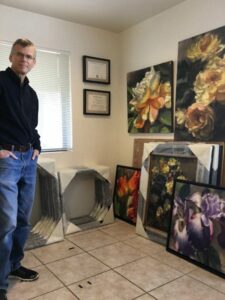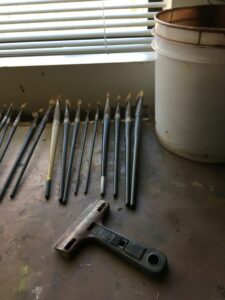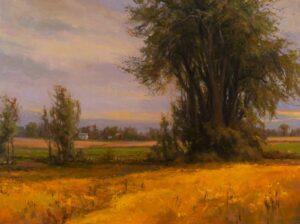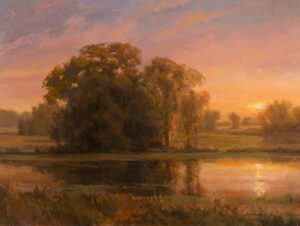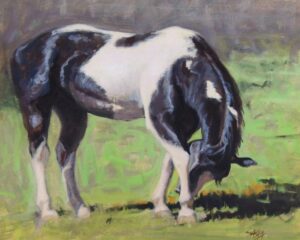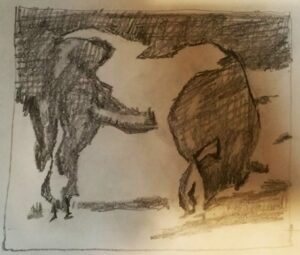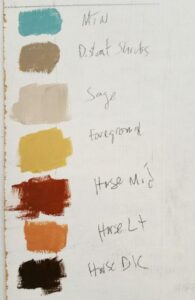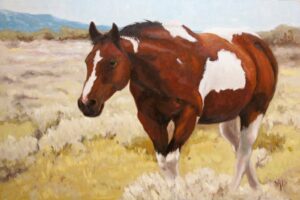
Because of this there is a lot of walking back and forth from the viewing point and the canvas. And it was also for this reason that I was also taught to use a wooden thumb palette – so it is always at hand for mixing paints.

This is what I now use to mix my colors. I still walk back and forth from my viewing point to the canvas, but the palette table sits directly in front of the canvas so that is where I do all of my paint mixing. I feel it has transformed my work since it has liberated me to mix copious amounts of paint with large bristle filbert brushes. I use bristle filberts of all sizes, but for the initial lay in I like to use number 12 filberts (about ¾ inch wide), and larger. I have several that are number 24 (about 2 inches wide).
So my oversize palette is a favorite thing. But to make using a large glass palette practical, I have to mention another favorite tool. I used to use a small razor blade window scraper to clean my palette. It was a habit I picked up from other artists, and it seemed more efficient and effective than using a palette knife. But one day when I was at the hardware store I discovered an extra-large window scraper with a four inch blade, and I now find it indispensable for quickly scraping and cleaning the large expanse of glass.
